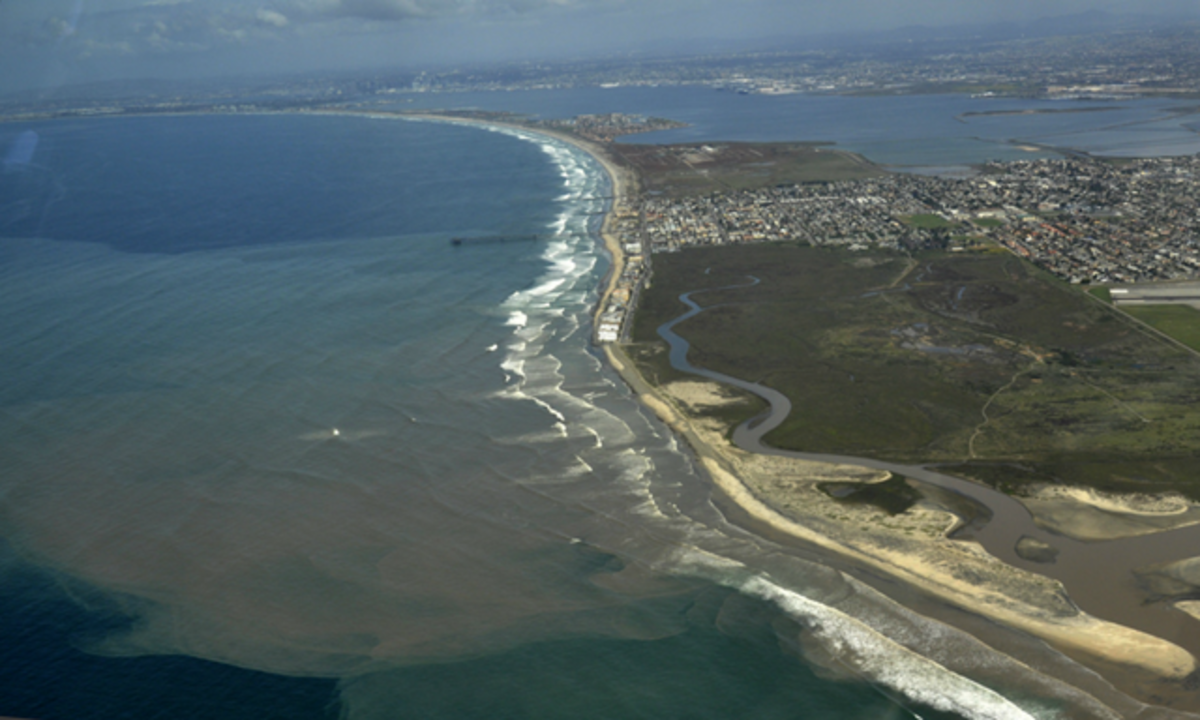2 steps of the scientific method
What is: observation/question, hypothesis, experiment, results, conclusion?
Definition of pollution
What is: when pollutants become harmful to wildlife (health, behavior, survival, etc.)?
Definition of ecological footprint
What is: land/water needed to support a lifestyle (including waste)?
Definition of sustainability
What is: using a resource in a way that doesn't deplete or degrade it long-term?
True or False: Pollution is only caused by humans
What is: False?
The dependent variable of a study analyzing how the presence of trees affects the temperature outside
What is: temperature?
Type of pollution shown:
What is: point source?
Most effective way to handle pollution
What is: prevent it from occurring in the first place?
3 examples of pollutants
What is: burning fossil fuels (GHGs), noise, heat, light, wildfires, etc.
Type of pollution shown:
What is: nonpoint source?
The independent variable in a study analyzing how plastic pollution affects frog populations
What is: plastic pollution?
Give an example of how everything is interconnected
What is: dust, cats of Borneo, Easter Island, etc.?
The ecosystem service(s) in: "Land allows food production and nutrient cycling to occur."
What is: food production, nutrient cycling?
The natural resource(s) in: "Biodiversity supports pest control and population control."
What is: biodiversity?
3 ways to lower your ecological footprint
What is: reduce / reuse / recycle?
Purpose of a constant variable
What is: to study the true relationship between 2 variables?
Difference between point source & nonpoint source pollution
What is: point source you can point at the source, nonpoint source more generic?
This term describes the living and non-living aspects of where you are
What is: environment?
The human population drastically increased after this major event
What is: Industrial Revolution?
Describe tragedy of the commons with an example
What is: overusing a shared resource to the point of depleting the resource (goldfish)?
A hypothesis for a study that is analyzing how the distance from a city affects the amount of wildlife
What is: "If you move farther away from the city, then there will more wildlife because there will be less pollution and more habitat"
A scientists tests if temperature affects how quickly fish swim. The scientist sets up 5 fish tanks, each with same amount/type of water and fish, and changes the temperature in each tank. Give an example of a possible controlled treatment (experiment) in this study.
What is: tank with normal temperature water?
A basic cause of environmental problems + how it contributes to environmental issues
What is: poverty, no full-cost pricing, unsustainable resource use, human population, isolation from nature?
What natural capital is made of
What is: natural resource + ecosystem service?
Purpose of a controlled treatment (experiment)?
What is: so you can compare results to how the variables interact normally without manipulation?
Name 3 constant variables in an experiment that is looking at how fish respond to sound. To test this, you set up 5 fish tanks of water. The only variables changing are fish response and sound.
What is: amount of water, type of water, amount of food, type of food, DO, size of tank, etc.?
3 basic causes of environmental problems (+200 pts if you can guess all 5)
What is: poverty, unsustainable resource use, lack of full-cost pricing, isolation from nature, population growth?
Name 2 natural resources and an ecosystem service we get from each resource
What is: water (purification/treatment), soil (renewal), air (purification, climate control, UV protection), land (food, nutrient recycling), nonrenewable minerals/energy (energy, materials for products), biodiversity (pest control, population control)?
Identify & describe the 3 worldviews
What is: Human-centered (nature exists to serve humans); life-centered (all life has value but humans of higher value); Earth-centered (all life is equal/interconnected & nature should be protected)?
2 of the 3 scientific factors of sustainability
What is: solar E, nutrient cycling, biodiversity?